Conflict Zones
Gaza’s Christians mourn death of Pope Francis | Israel-Palestine conflict News
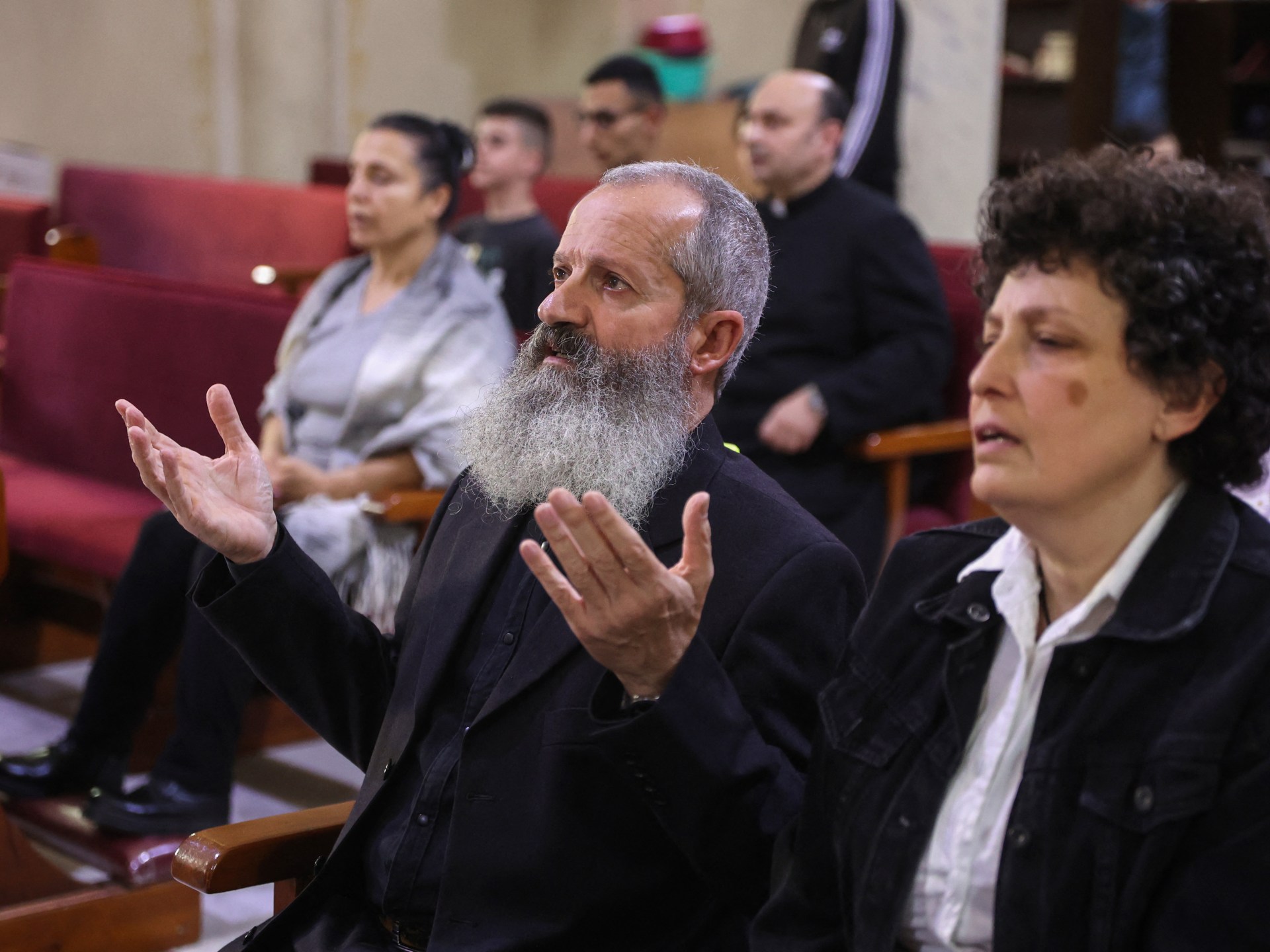
Gaza’s small Christian community is mourning the death of Pope Francis, who had maintained close and consistent video contact with the Palestinian devotees throughout the war that continues to devastate the enclave.
Since the outbreak of fighting between Israel and Hamas in October 2023, Francis had regularly called Gaza’s Christians, often several times a week, offering prayers, encouragement and solidarity.
“I always waited to hear the words of the Holy Father. I would watch him on television, and through the screens. He gave us hope with his messages and prayers,” said Elias al-Sayegh, 49, from Zeitoun.
“We felt we were alive because of his prayers and blessings. Every day, he renewed our hope for an end to the war and the bloodshed. His prayers will remain with us for peace in the land of peace, Palestine.”
“I wish I could take part in the prayers at the Church of the Nativity and the Church of the Holy Sepulchre,” he added, referring to ancient churches in Bethlehem in the occupied West Bank and Jerusalem.
“With the pope’s passing, we in Gaza feel as though a light of love and peace has been extinguished,” said 67-year-old George Ayad from al-Sahaba.
“Though the Vatican is far away, his voice always reached our hearts – he never ceased calling for peace and justice.
“Amid the pain and suffocating blockade we endured, we clung to his words as a beacon of hope. The pope never forgot Gaza in his prayers – and today, we offer ours for his soul.”
Conflict Zones
After a year of hostility, Pakistan and Afghanistan seek diplomatic reboot | Taliban News
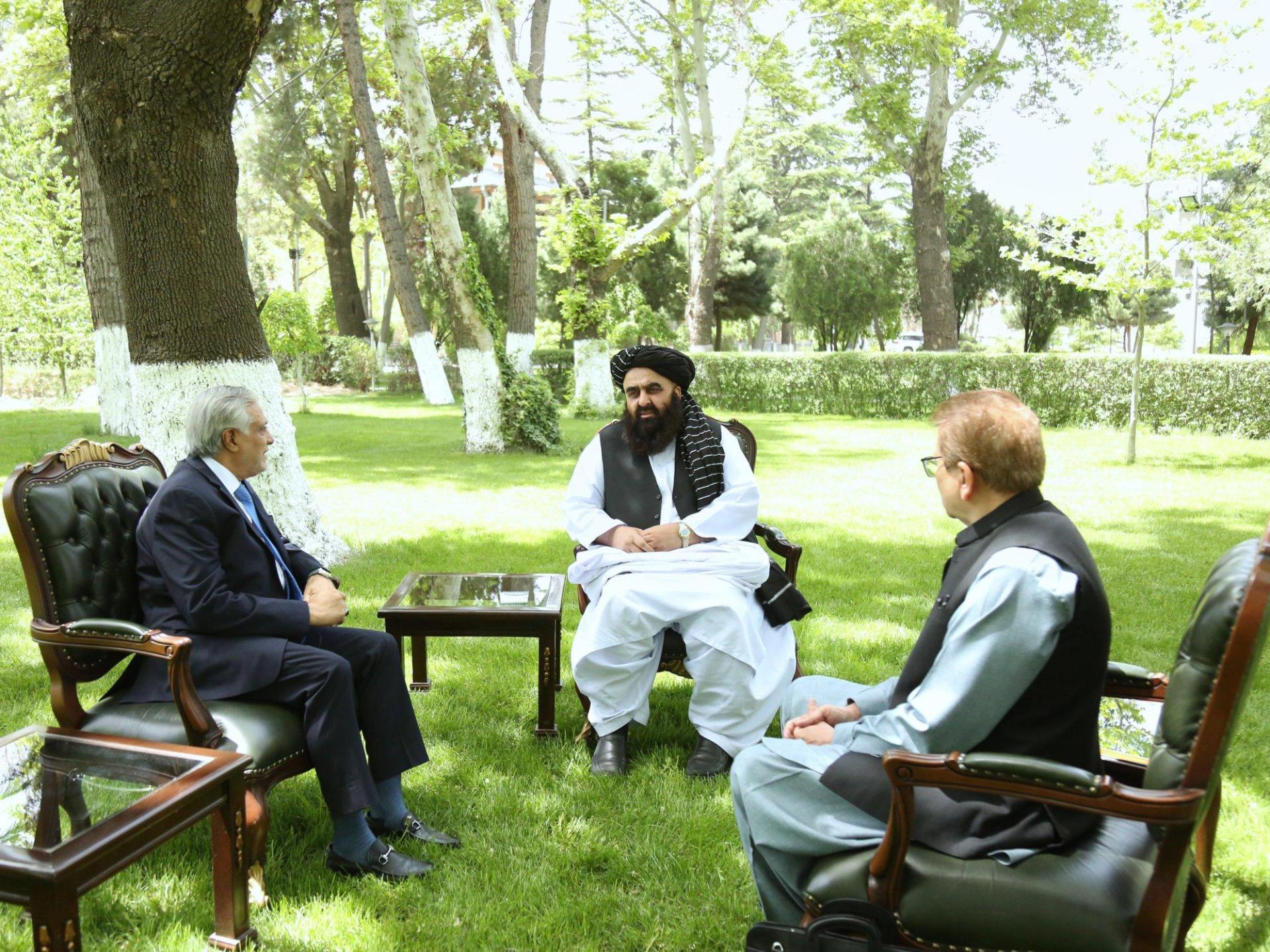
Islamabad, Pakistan – When Pakistan’s Deputy Prime Minister and Foreign Minister Ishaq Dar landed in Kabul on April 19 for a daylong visit, it marked the first major trip by a senior Pakistani official to Afghanistan since February 2023.
Dar’s visit came just days after senior military and intelligence officials from both countries had met in Kabul for the first time since January 2024.
These meetings follow months of strained relations between the neighbours amid frequent border skirmishes, Pakistan’s decision to expel Afghan refugees, and repeated border closures that have disrupted business and trade.
Dar’s trip, say analysts, signals a willingness from both sides to reset ties through diplomacy.
According to Pakistan’s Ministry of Foreign Affairs, Dar met Afghanistan’s interim foreign minister, Amir Khan Muttaqi. The two leaders held discussions on “security, trade, transit, connectivity, and people-to-people contacts”.
The statement from the Afghan Foreign Ministry, however, did not mention security concerns and focused on issues such as “situation of Afghan refugees, political relations, economic cooperation, trade, transit, large-scale joint projects, and other matters of mutual interest.”
At a news conference in Kabul following his meeting with Muttaqi, Dar said Pakistan has invited Afghan officials to Islamabad and called for open communication channels to resolve disputes between the two countries.
“We have requested our hosts that we have to work together for the progress, betterment and peace and security of the region. For that, neither will we allow anyone to use our soil to conduct illicit activities in Afghanistan, nor will you allow anyone to use your soil,” Dar said.
Security concerns after 2021
Since the Taliban took control of Afghanistan in August 2021 after the United States withdrew its troops, Pakistan has witnessed a sharp increase in violent attacks, particularly in the northwestern province of Khyber Pakhtunkhwa and the southwestern province of Balochistan, both of which share borders with Afghanistan.
Islamabad has repeatedly alleged that Afghan soil is being used by armed groups, especially the Pakistan Taliban, known by the acronym TTP, to launch attacks across the porous border.
Pakistan Taliban, founded in 2007, is ideologically aligned with the Taliban in Afghanistan but operates independently. The Taliban has repeatedly rejected allegations that it allows its soil to be used for attacks against Pakistan, and has consistently denied any ties with the TTP.
Data from the Pak Institute For Peace Studies, an Islamabad-based conflict research organisation, shows that Pakistan experienced 521 attacks in 2024, a 70 percent increase from the previous year.
These incidents claimed 852 lives, a 23 percent rise, with 358 of those killed being law enforcement personnel. Most of the violence occurred in Khyber Pakhtunkhwa and Balochistan.
Once seen as a benefactor of the Taliban, Pakistan has cited the uptick in violence as the main reason for its crackdown on hundreds of thousands of Afghan refugees, many of whom have lived in the country for decades.
Pakistan has hosted millions of Afghan refugees since the Soviet invasion of Afghanistan in 1979, welcoming several waves of displaced people as conflict continued in the country.
Following the 9/11 attacks and the subsequent US invasion of Afghanistan, thousands of Afghans returned home. However, the Taliban’s dramatic return to power in August 2021 prompted another wave of displacement, with between 600,000 and 800,000 people seeking refuge in Pakistan.
Since the expulsion programme began in November 2023, nearly one million Afghan nationals have been forced to return, with the Pakistani government declaring that it would continue its repatriation drive.
Global rights organisations, as well as the Afghan government, have urged Pakistan to reconsider the decision and ensure the dignity of those being deported.
Revival of diplomatic ties?
Despite rising hostilities between the two countries, including Pakistani air attacks on Afghan soil in December that killed at least 46 people, analysts see Dar’s visit as “significant” and suggestive of a broader resumption of dialogue.
Iftikhar Firdous, co-founder of The Khorasan Diary, a portal that tracks regional security issues, pointed out that this was the highest-level visit from Pakistan to Kabul since former Prime Minister Imran Khan’s trip in November 2020.
“The visit by Dar included discussions on security, ease of business for traders, and continued conversations on cross-border issues,” Firdous told Al Jazeera.
The Islamabad-based analyst added that the recent meeting between military and intelligence officials indicates that backchannel efforts to resurrect diplomacy were under way even before Dar’s trip.
“It was not a start, but instead a culmination of the agenda to re-engage with Afghanistan and break the ice,” he said.
Amina Khan, director of the Centre for Afghanistan, Middle East and Africa at the Institute of Strategic Studies Islamabad (ISSI), said both sides appear to be looking for ways to accommodate each other’s concerns.
“For Pakistan, it is security, and for Kabul, it is trade. However, since both are intertwined, a comprehensive bilateral approach is needed. This trip appears to have initiated a dialogue. One will have to see if both sides can maintain the positive momentum,” she told Al Jazeera.
Khan added that Pakistan recognises the importance of Afghanistan to its own stability.
“Pakistan realises that, in order to achieve this, workable ties with Kabul are paramount, but at the same time it is pivotal for Kabul to address Pakistan’s security concerns emanating from the TTP,” she said.
A United Nations report [PDF] published in February concluded that the Taliban continued to provide logistical, operational and financial support to the TTP. It added that the armed group has set up new training centres in border regions near Pakistan.
In response, Zabihullah Mujahid, the Afghan government spokesperson, denied the allegation, calling it a “regular slander” against the country.
“The stance of the UN is misused. We call on the countries who are members of the UNSC but have good relations with Afghanistan to not allow the reputation of the organization to be harmed,” Mujahid said in February.
On the same page?
Khan of ISSI said the Taliban faces its own challenges while dealing with armed groups like the Pakistan Taliban.
“Pakistan understands the limitations of the Afghan Taliban in taking action against the TTP, who may very well join the ranks of so-called ISIS [ISIL] and take up arms against the government,” she said.
Meanwhile, the Taliban has stressed that the Afghan government is unhappy about the eviction of hundreds of thousands of Afghans by Pakistan.
Raising the issue of their forced repatriation in the meeting with Dar, Minister Muttaqi stressed the need for humane treatment and urged Pakistani authorities to protect the rights of Afghan nationals currently residing in Pakistan or returning from there.
The Pakistan Foreign Ministry statement, meanwhile, focused on the country’s security concerns.
“The Deputy Prime Minister emphasised the paramount importance of addressing all pertinent issues, particularly those related to security and border management, in order to fully realise the potential for regional trade and connectivity,” the ministry’s statement read.
Still, Khan, the analyst, said she believes that Dar’s visit has broken the ice. Now, the key will be to “remain engaged” and pursue a holistic approach to bilateral relations, she said.
“While security is a crucial aspect, it should not be the sole focus. Other aspects, such as diplomatic, economic, and cultural cooperation, must also be considered to build a balanced and sustainable partnership,” Khan said.
Conflict Zones
Away from the global spotlight, Eritreans are trapped in a garrison state | Conflict
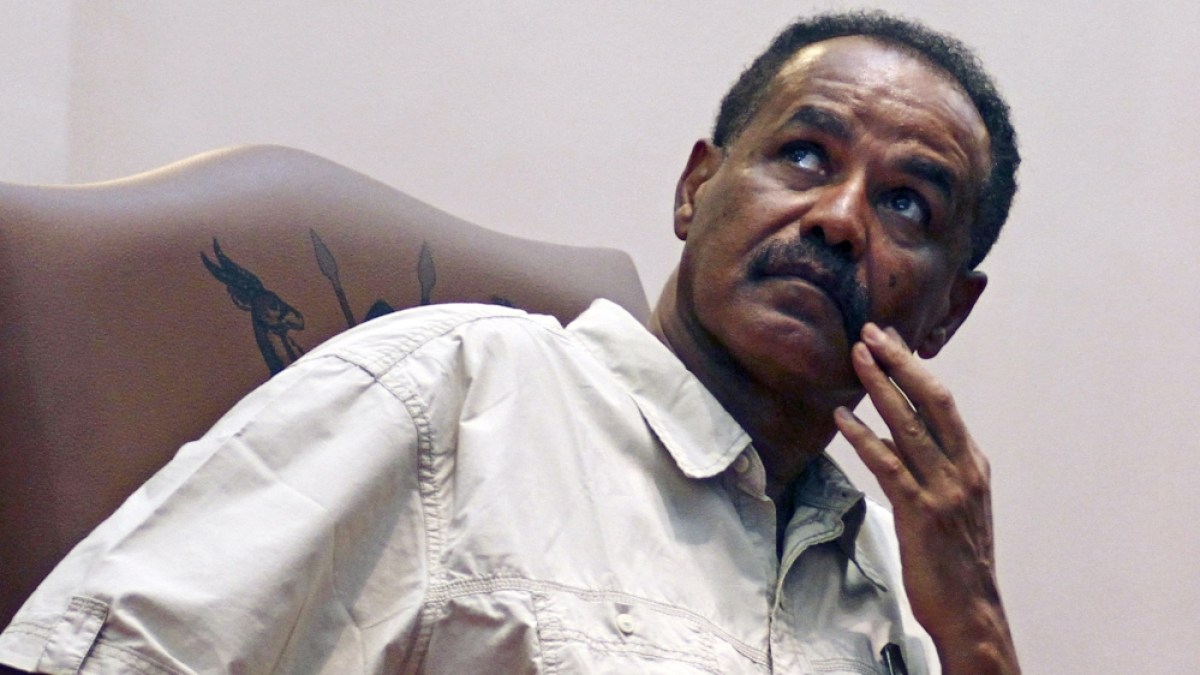
American writer and security analyst Paul B Henze, who served in the Carter administration as a deputy to National Security Adviser Zbigniew Brzezinski, once made a very astute observation about Eritrea’s current president, Isaias Afwerki.
In his 2007 book, Ethiopia in Mengistu’s Final Years: Until the Last Bullet, he noted “Isaias impressed me as remarkably similar in temperament and attitudes to Mengistu [Haile Mariam, Eritrea’s former dictator who has overseen the killings of tens of thousands of opposition figures and civilians]. He has many of the same mannerisms, a rather bulldoggish seriousness, a defensiveness behind a facade of feigned reasonableness that is not really convincing. One senses a stubborn, fundamentally authoritarian personality.”
The similarities Henze saw between Mengistu and Isaias have proven correct and highly consequential over the last three decades.
After declaring victory against the Mengsitu regime in 1991, Isaias was able to oversee the emergence of an independent, sovereign Eritrea. For a brief moment, Eritreans were full of hope. They assumed independence would bring more freedom and better economic prospects. There was talk of turning Eritrea into Africa’s Singapore.
However, the euphoria of independence was short-lived. The dream of transforming Eritrea into a prosperous liberal democracy did not appeal to Isaias. He wanted his country to resemble not Singapore, but Sparta. He rejected the democratic constitution drafted by the pre-eminent Eritrean jurist Bereket Habte Selassie and ruled Eritrea with an iron fist.
In no time, he turned Eritrea into a garrison state. He transformed Eritrean institutions and society at large into tools to fulfil his geo-political fantasies. Eritreans became unwilling pawns in the president’s many military schemes, with no space left for their personal dreams and aspirations.
Isaias ruthlessly dealt with even his closest colleagues and allies who dared to suggest that Eritreans enjoy some basic liberties that people elsewhere in the world often take for granted.
In May 2001, 15 senior Eritrean officials, many of whom had been on the president’s side throughout the independence war, issued an open letter urging him to reconsider his autocratic mode of governance and hold free and fair elections. At the time, three of the 15 officials were living abroad, and one eventually changed his position and rejoined the Isaias government. The remaining 11, however, were swiftly arrested on unspecified charges. More than 20 years later, the fates of these 11 men are still unknown. No one knows for sure if they are alive or dead. No legal or religious counsel or family member has been granted access to them. There have been no charges, no trials, no conviction and no sentence.
Though these senior officials are among the most prominent in Eritrea to be meted such treatment, their fate is hardly unique. Anyone in Eritrea who dares to question the great wisdom of the infallible President Isaias meets the same fate.
In the nightmarish gulag state that President Isaias created, no one is free to study, work, worship, run a business or engage in any other normal activities. There is a mandatory and indefinite military service which keeps every Eritrean citizen in servitude to the supreme leader for their entire lives.
While everyone in Eritrea suffers from Isaias’s institutionalised tyranny, religious and ethnic minorities suffer the most. Religious persecution in the country is so extreme that in 2004 the US Department of State designated Eritrea as a “country of particular concern” under the International Religious Freedom Act of 1998. There is also significant ethnic persecution in Isaias’s Eritrea. In a May 2023 report, for example, UN Special Rapporteur on the situation of human rights in Eritrea, Mohamed Abdelsalam Babiker, underlined the harsh conditions faced by the Afar community who inhabit the Dankalia area of the country. Babiker wrote: “The Afar are one of the most disenfranchised communities in Eritrea. For several decades, they have been subjected to discrimination, harassment, arbitrary arrests, disappearance, violence, and widespread persecution.”
In the end, Paul Henze’s insight about the fundamentally autocratic personality of Isaias proved not only right, but also an understatement. The oppression and violence of Isaias’s rule in the past three decades matched and at times surpassed that of Mengitsu.
Regrettably, the world rarely acknowledges the plight of Eritreans, who are forced to live their lives as unwilling servants and soldiers of their authoritarian president. The toll of Isais’s endless war schemes on Eritreans is still rarely mentioned in discussions about the region.
Eritrea under Isaias is a country always on a war footing. Right now, it is not only agitating against Ethiopia, but also actively involved in the civil war in Sudan. In fact, one would be hard-pressed to find a period in Eritrea’s post-independence history that it was not at war with one of its neighbours, or involved in some regional conflict or civil war. War is the modus vivendi of President Isaias.
The world is now paying some attention to Eritrea, because of the looming risk of conflict with Ethiopia. But even if conflict between the two neighbours is somehow prevented, the misery of Eritreans stuck in Isaias’s garrison state will continue. Forgotten and left to their own devices, Eritreans will continue to suffer in a brutal dictatorship where the individual is seen just as fodder for the mighty Eritrean Defence Forces. This must not be allowed to continue. The world must not avert its gaze and forget about the plight of Eritreans once their country is no longer mentioned in the news. The world needs to act before more Eritreans lose their lives and dreams fighting in Isaias’s forever wars.
The views expressed in this article are the author’s own and do not necessarily reflect Al Jazeera’s editorial stance.
Conflict Zones
Landmines continue to claim lives in post-Assad Syria | Syria’s War News
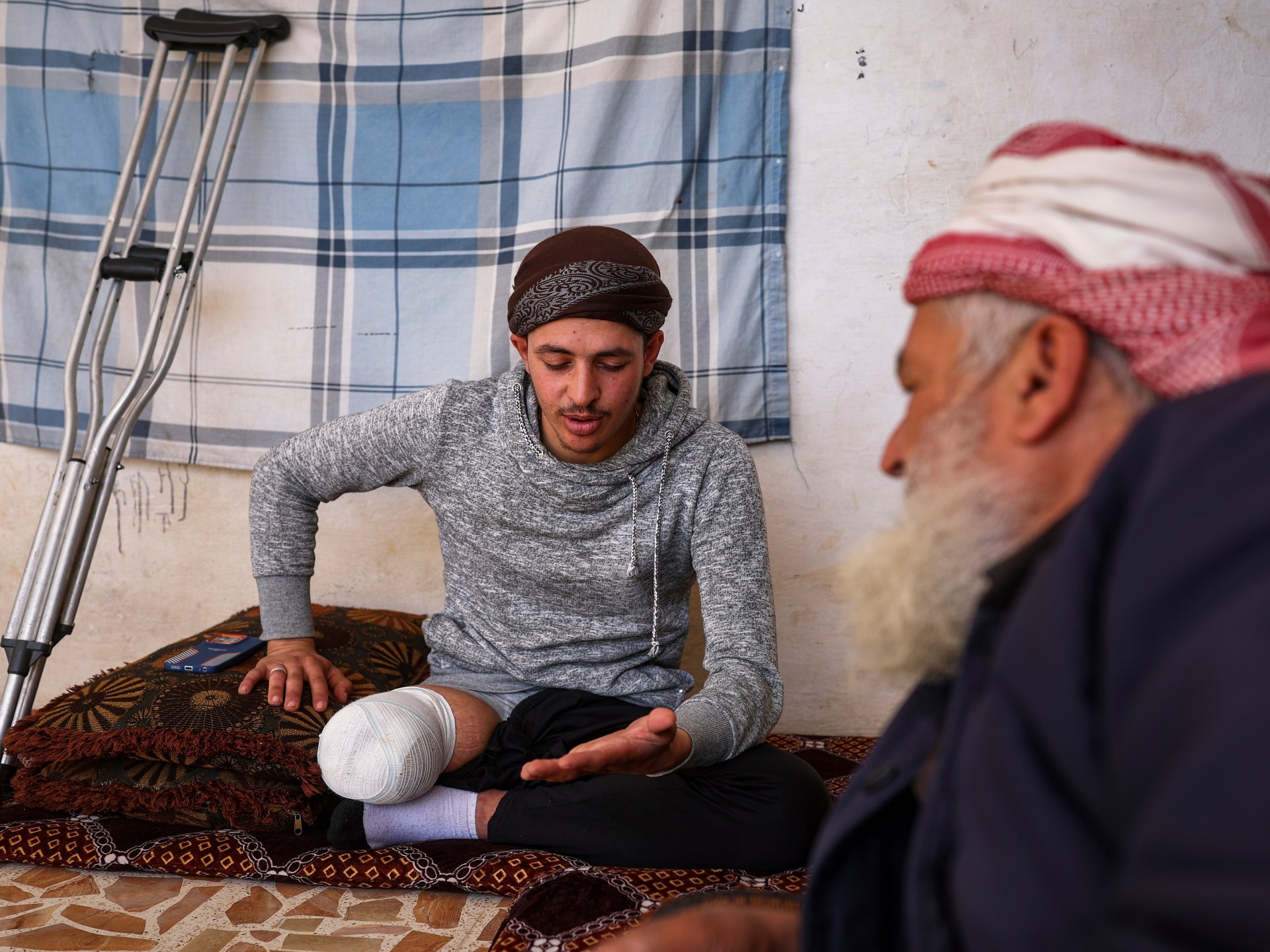
Suleiman Khalil was harvesting olives in a Syrian orchard with two friends four months ago, unaware the soil beneath them still hid deadly remnants of war.
The trio suddenly noticed a mine lying on the ground. Panicked, Khalil and his friends tried to leave, but he stepped on a hidden mine that exploded. Terrified, his friends ran to find an ambulance, but Khalil, 21, thought they had abandoned him.
Khalil’s left leg was badly wounded in the initial explosion. His right leg was blown off from above the knee in a second blast. He used his shirt as a tourniquet on the stump and screamed for help until a nearby soldier heard him and rushed to his aid.
While the nearly 14-year Syrian war came to an end with the fall of Bashar al-Assad on December 8, war remnants continue to kill and maim.
Mines and explosive remnants – widely used since 2011 by Syrian government forces, its allies and armed opposition groups – have contaminated vast areas, many of which became accessible only after al-Assad’s government collapsed, leading to a surge in the number of landmine casualties, according to a recent Human Rights Watch (HRW) report.
Experts estimated that tens of thousands of landmines remain buried across Syria, particularly in former front-line regions like rural areas of Idlib governorate.
At least 249 people, including 60 children, have been killed and 379 injured by these munitions since December 8, according to INSO, an international organisation that coordinates safety for aid workers.
Landmines not only kill and maim but also cause long-term psychological trauma and broader harm, such as displacement, loss of property and reduced access to essential services, HRW says.
The rights group has urged the transitional government to establish a civilian-led mine action authority in coordination with the United Nations Mine Action Service to streamline and expand demining efforts.
-

 Sports1 day ago
Sports1 day agoNBA Playoffs: Steph Curry leads Golden State Warriors to Game 1 win and more from Sunday’s action
-
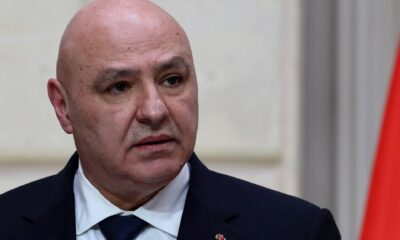
 Middle East2 days ago
Middle East2 days agoLebanese president says disarming Hezbollah ‘delicate’ as Israel kills two | Israel attacks Lebanon News
-

 Europe6 hours ago
Europe6 hours agoSimone Biles, Mondo Duplantis win big at 25th Laureus World Sports Awards
-

 Europe1 day ago
Europe1 day agoTrump and Francis, both elected as outsiders, sparred from afar on policy and diverged on leadership style
-

 Sports1 day ago
Sports1 day agoHolger Rune stuns Carlos Alcaraz to win Barcelona Open and end two-year trophy drought
-
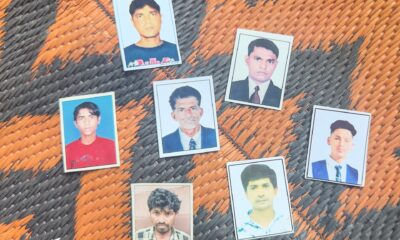
 Conflict Zones1 day ago
Conflict Zones1 day agoJailed for fishing: India-Pakistan tensions trap families in debt, poverty | Border Disputes
-

 Africa9 hours ago
Africa9 hours agoKenyan runners win both male and female races at Boston Marathon 2025
-

 Asia12 hours ago
Asia12 hours agoIn China, which has a tense relationship with the Vatican, Pope’s death receives muted official response




